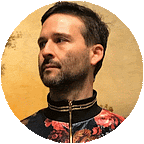Introducing the Data Visualization Society
Over the last few years, data visualization has grown dramatically more common in our day-to-day experience. We see it in our news articles, in our social media and, for many of us, every day at work. The task of designing, creating and deploying data visualization isn’t just a single profession but shows up in the work of engineers, analysts, salespeople, doctors, journalists, designers, students and more. Despite its prominence, most of the resources for learning data visualization are focused on a particular tool or industry or are limited to optimizing individual charts and don’t include general guidelines for developing data visualization skills professionally.
We created the Data Visualization Society in order to address that lack of professional development in the field, create a larger community, and provide a space that makes it more possible to learn from one another, differences and all. In doing so, we hope to establish guidelines for professional development to support people starting out in data visualization as well as those who have established careers.
Data visualization is an integral part of the work done by a wide variety of professions, and for others, an entertaining pastime. People who use data visualization in their day-to-day lives include:
- Full-time data visualization specialists
- Front-end engineers
- Software engineers
- Design professionals
- Data scientists / analysts
- Academics
- Journalists
- Scientists / researchers
- Data artists
- Those who don’t work in data visualization, but create data visualization pet projects in their own time
- Perhaps others that we didn’t think of!
We are excited about, welcoming of, and encouraged by this diversity. Our goal is to address professional data visualization holistically, without constraining it to a field or tool. This will allow us to cross-pollinate and learn from each other’s strengths to move the field forward.
The Data Visualization Society aims to be three things:
- A place to foster constructive engagement with community members on broader problems of the field. For example, we will leverage Slack, a chat platform, to give members the opportunity to learn from and support each other, engage in critique, debate the current topics of the field and show off their work. We’ll take the relevant points of these discussions and regularly summarize them in this publication.
- A resource for data visualization practitioners regardless of whether they have been doing data visualization for decades or just started. This entails having a central place to look for and post jobs, one location to look for data visualization events, maintaining surveys of the field (like the yearly Data Visualization Survey, which will transition from being a personal project to the responsibility of this organization), highlighting opportunities like data visualization competitions and awards, as well as summarizing the most important details of the current research and trends in data visualization.
- An engine to push the maturation and professionalization of data visualization. Becoming a member is free for the time being. We hope to reach a point where we can offer enough value to ask for membership fees to support conferences and other professional development.
The Data Visualization Society was founded by Amy Cesal, Mollie Pettit and Elijah Meeks, who have very different backgrounds: Mollie is a data visualization freelancer with a background in data science and education in mathematics and geoscience. Amy is a graphic designer who fell in love with designing for data while working with researchers in DC at a non-profit. She followed this passion and obtained a masters degree in Information Visualization from MICA. Elijah is a data visualization engineer in Silicon Valley. They all agree that creating a center of gravity will move the field and profession forward.
If this appeals to you and you feel like you want to take part in this community, feel free to become a member. If you have ideas or the time to put into a more active role, please contact us via email, in the comments section here, or on Twitter.
this article was co-written by @amycesal, Mollie Pettit & Elijah Meeks
